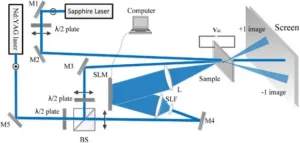Simon Lucey, an Associate Research Professor in the Robotics Institute at Carnegie Mellon University (Pittsburgh, PA) along with colleagues Surya Singh and Kit Hamm of the University of Queensland are developing a technology that uses a smartphone’s camera and accelerometers to measure physical objects in 3D space. It is claimed that the system can be used to build “3D models of the world” just by “waving a smartphone around an object or scene”. Alternately, the object of interest can be rotated in view of the smartphone. The new tool has the potential to enable improved computer vision and the ability of users to create a 3D model of almost any physical object and to do so using only a smartphone.
The accelerometers, or Inertial Measurement Units (IMUs), are already found in typical modern smartphones and are used, for example, for the purpose of sensing and then changing the display view between portrait and landscape. The IMUs by themselves, however, can at best produce only a rough calculation of the spatial position of the smartphone in space. The reason is that the trajectory determined with these “inexpensive” IMUs is noisy and found to drift over time.
The basis of the researcher’s new approach is that the information provided by noisy IMUs can be good enough when used in conjunction with and supplemented by information provided by the camera. All that is required to get measurements that can produce an accurate model is for the user to “wave” the camera around the 3D object of interest.
It should be noted that the technique does not yet operate in real time.
Lucey stated that “We’ve been able to get accuracies with cheap sensors that we hadn’t imagined”. He went on to explain that, with a face tracker program, it has been possible to demonstrate the capability to measure the distance between a person’s pupils within half a millimeter.
In another statement, Lucey said of the new measurement technology. “The amazing thing is that we can turn any smartphone into a ruler – no special hardware, no depth sensors, just your regular smart device”.
The cost of the new approach is reported as much less than that associated with previous attempts at solving the same issue. – Arthur Berman
Robotics Institute, Simon Lucey, 412-268-3818, [email protected]

